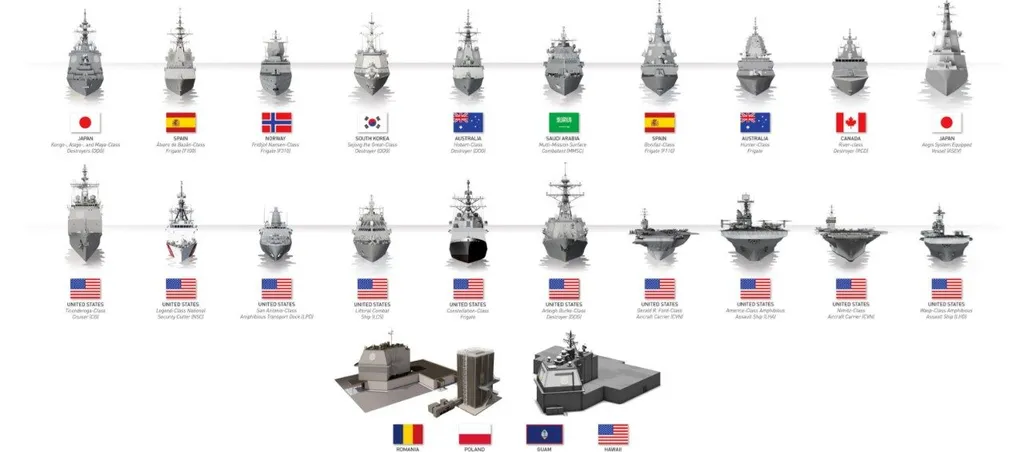The modern battlefield is evolving at an unprecedented pace, demanding technologies that can adapt as quickly as the threats they are designed to counter. Scalability has emerged as a critical factor in military success, enabling forces to deploy systems that can be rapidly reconfigured, upgraded, and integrated across multiple domains. From naval combat systems to air defence and helicopter modernization, the ability to scale technology is redefining how militaries operate and defend their nations.
Aegis: A Scalable Combat System for Multi-Domain Operations
The Aegis Combat System, once confined to U.S. Navy ships, has evolved into a versatile, multi-domain defence solution. Today, it powers over 120 vessels across six nations and has been successfully adapted for land-based operations. At the 2025 Talisman Sabre exercises, Aegis demonstrated its scalability by integrating its command and control (C2) capabilities into a smaller form factor. This allowed real-time coordination across artillery units, from battalion to battery level, while seamlessly interfacing with Army Tactical Link 16. The system also supported upgrades to the Mid-Range Capability (MRC) Battery, enabling digital coordination of fires during live-fire exercises.
Aegis is more than just a combat system; it is a blueprint for rapid technological adaptation. Its ability to scale across domains—air, land, and sea—provides militaries with flexible, rapid-response defence solutions. As threats become more complex, Aegis’ modular design and open-architecture standards ensure it remains at the forefront of battlefield management.
Next-Generation Command and Control: A Data-Centric Approach
The U.S. Army is undergoing a digital transformation, and Next-Generation Command and Control (NGC2) is at the heart of this evolution. This data-centric approach provides commanders with a continuous, common operating picture of the battlefield, even in the most dynamic and unpredictable environments. By leveraging Modular Open Systems Architecture (MOSA) and API-driven integration, NGC2 creates an ecosystem where new capabilities can be easily plugged in, data shared seamlessly, and transformative technologies rapidly deployed to the warfighter.
Collaborating with small businesses and innovators like Raft and Hypergiant, the Army is accelerating the integration of cutting-edge technologies into its command and control infrastructure. This partnership-driven approach ensures that the latest advancements reach the frontlines swiftly, enhancing operational effectiveness and mission success.
One Launching System, Endless Possibilities
The Mk 41 Vertical Launch System, Mk 70, and MRC launchers operate as a unified, adaptable ecosystem. Built on modular hardware, open-architecture software, and a common logistics backbone, these systems can be scaled up or down to meet evolving mission needs. The MRC, equipped with next-generation munitions, exemplifies this adaptability. Its common launch-tube, fire-control computer, and data-link interface allow for the integration of new weapons, performance levels, and even mission concepts without redesigning the platform.
This “any missile, anywhere” architecture ensures that launch systems remain future-ready, capable of evolving alongside operational demands. By maintaining a common interface across platforms, militaries can rapidly deploy new capabilities, ensuring they stay ahead of emerging threats.
PAC-3 MSE: The World’s Most Advanced Air Defense Missile
The PAC-3 family of missiles, particularly the PAC-3 Missile Segment Enhancement (MSE), is enhancing global missile defence. With combat-proven hit-to-kill interceptors, PAC-3 MSE defeats tactical ballistic missiles, cruise missiles, advanced threats, and aircraft through direct kinetic impact. Its integrated capabilities allow nations to scale the system across land and sea platforms, making it a cornerstone of layered missile defence for 17 countries.
In 2025, production is on track to exceed 600 PAC-3 MSEs, with a target of 650 by 2027. The program is ahead of its capacity goals, and additional investments are being explored to further increase production and accelerate deliveries. Recently, PAC-3 MSE showcased its scalability by integrating into the Aegis Combat System, providing U.S. forces with greater capacity and flexibility to counter missile threats across multiple layers of defence.
Black Hawk Modernization: Faster, More Affordable Integration
The U.S. Army is modernizing its Black Hawk fleet to keep pace with evolving threats. Leveraging MOSA, new capabilities can be integrated faster, reducing integration time by 50-70%. This “plug and play” approach allows for the rapid deployment of advanced technologies, from command and control of launched effects to mission management, ensuring the Black Hawk remains at the cutting edge of military aviation.
“We are giving warfighters a plug and play path to add cutting-edge capabilities to the Black Hawk, cutting integration effort by at least

